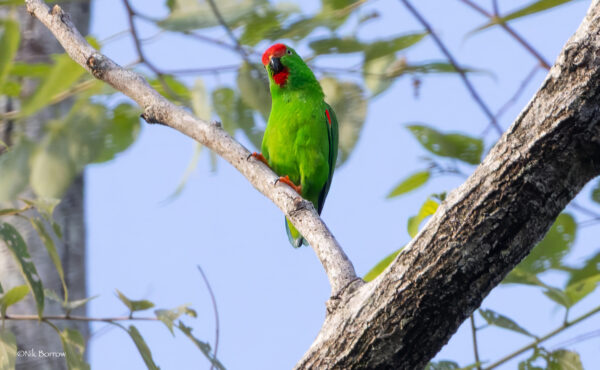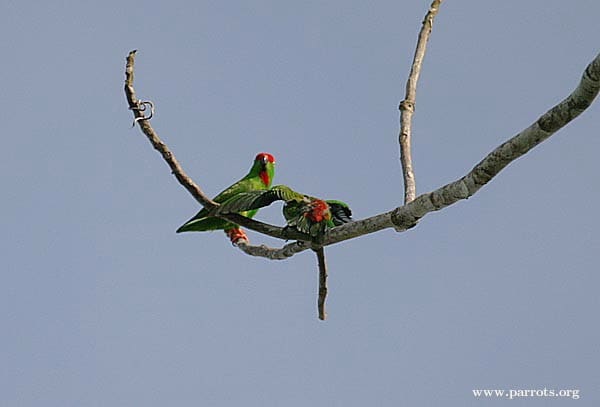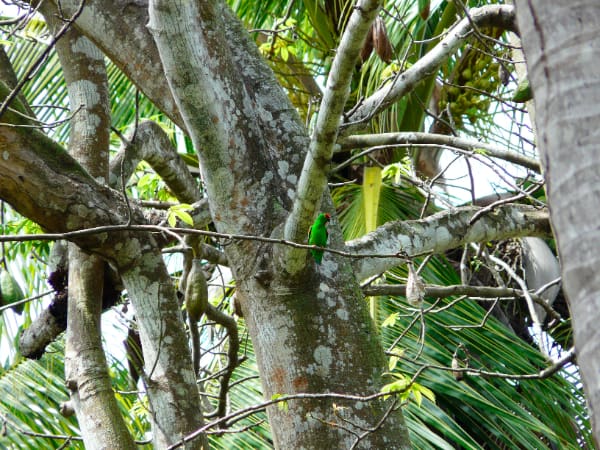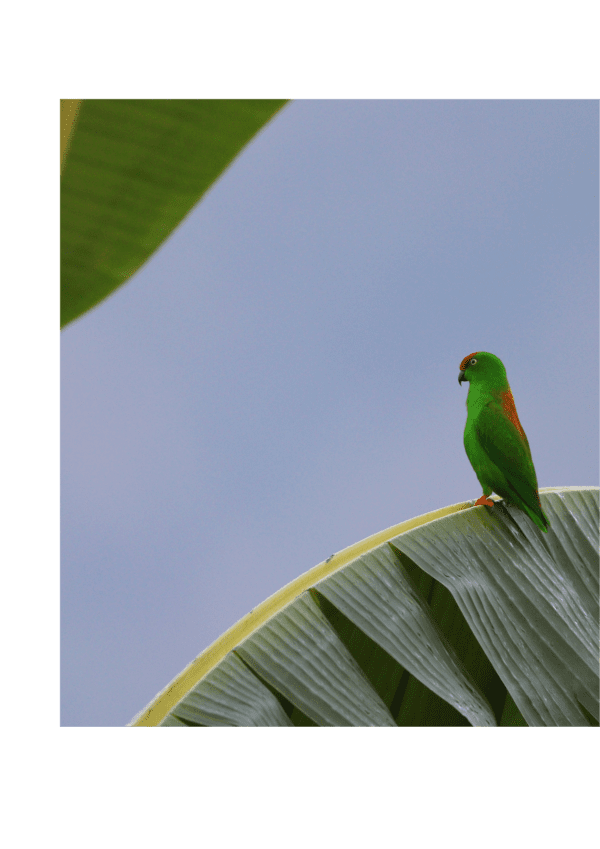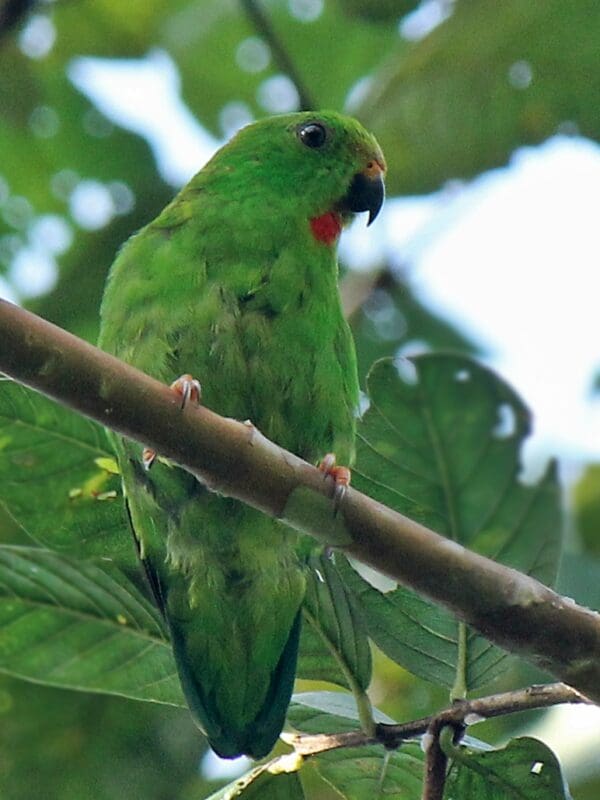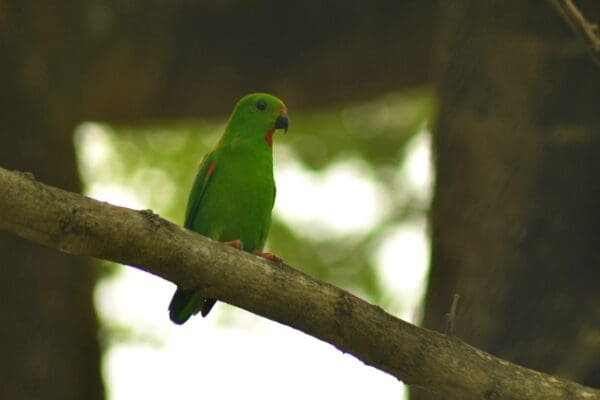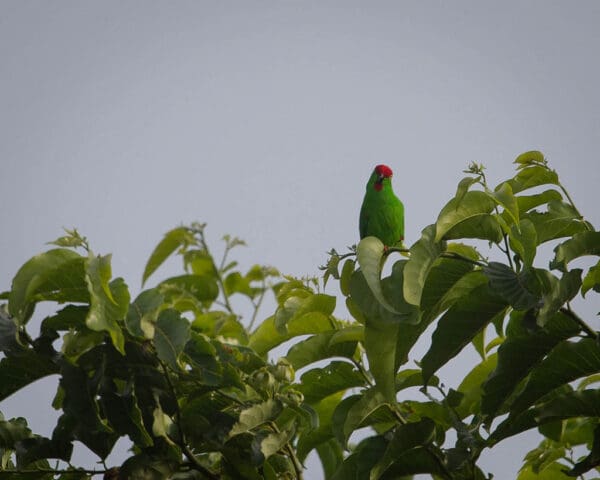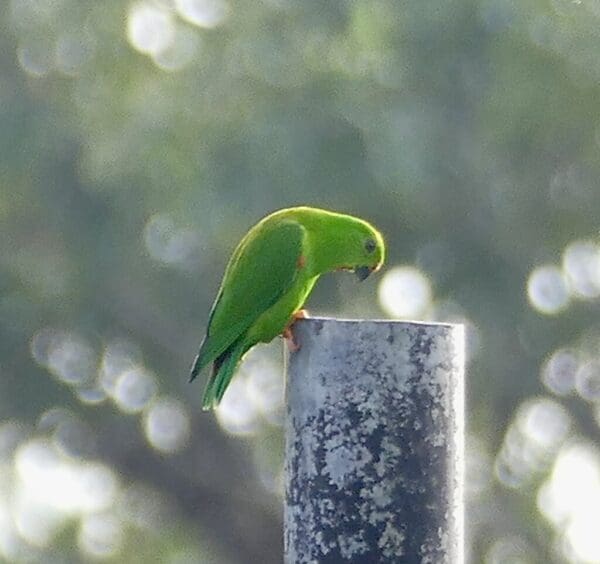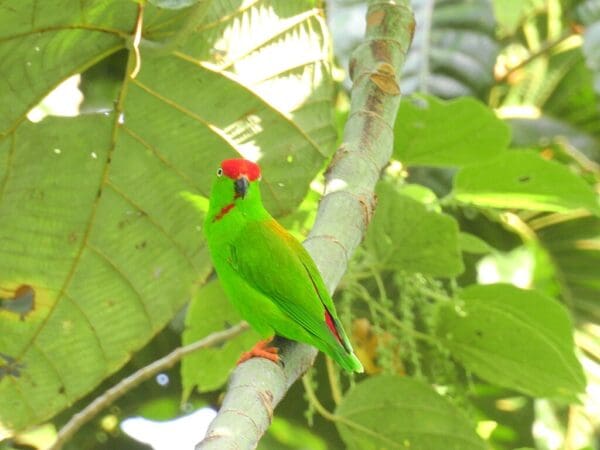Maroon-rumped Hanging Parrot
Also known as:
Sulawesi Hanging Parrot, Large Sulawesi Hanging Parrot, Celebes Hanging Parrot, Celebes Spotted Hanging Parrot, Red-capped Hanging Parrot, Red-crowned Hanging Parrot
Also known as:
Sulawesi Hanging Parrot, Large Sulawesi Hanging Parrot, Celebes Hanging Parrot, Celebes Spotted Hanging Parrot, Red-capped Hanging Parrot, Red-crowned Hanging Parrot
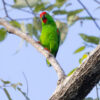
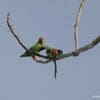
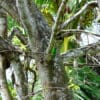
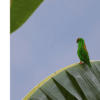
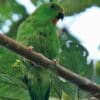
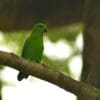
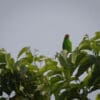
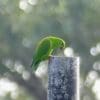
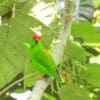
DID YOU KNOW?
The Maroon-rumped Hanging Parrot is the largest of the Hanging Parrots.

Loriculus

stigmatus
Size:
15 cm (5.8 in)
Weight:
Probably 28-35 g (1-1.2 oz)
Subspecies including nominate:
one
Colour Adult:
Male-in general green in colour; red forehead and crown, reaching beyond level of eye; orange/yellow tint to nape and mantle; chin and throat have red mark; red carpal edge; dark maroon/red rump and upper tail coverts; green tail tipped with yellow/green. Beak black. Eye pale yellow. Female-green forehead and crown. Eye brown.
Colour Juvenile:
Green forehead and crown; yellow throat mark washed with red; green/yellow carpal edge. Beak horn in colour. Eye brown.
Call:
Calls are described as high-pitched and repetitious two or three-note sounds, the first note with upward inflection. Alarm call is shrill.
More Information:
Content Sources:
CITES
BirdLife International
Cornell Lab of Ornithology/Birds of the World
Parrots: A Guide to Parrots of the World, Juniper and Parr, 1998
Parrots of the World, Forshaw and Cooper, 1977. 2010 edition
Parrots of the World, Forshaw, 2006.
Captive Status:
Uncommon.
Longevity:
—
Housing:
Planted outdoor aviary (in warm climates) with shelter or indoor planted aviary 2.5 x 1 x 2 m (8.2 x 3.3 x 6.5 ft).
Diet:
Fruits such as: apple, pear, banana, cactus fruits, guavas, pomegranate, the larger fruits halved, not chopped; vegetables such as grated carrot and broccoli; berries such as: blackberries, redcurrants, raspberries; small seeds such as: canary and soaked oats; spray millet; sponge cake and nectar; insectivorous mixture such as: mealworms, clean maggots and ant pupae, and eggfood when breeding.
Enrichment:
Vigorous chewer, so provide bird-safe, unsprayed flowering, fir, willow, pine or elder branches, heat-sterilized pine cones, wooden and vegetable tanned leather toys. Also provide overhead misters or shallow water bowls for bathing.
Nest Box Size:
Nest log 12″ x 6″ (30.5 cm x 15.2 cm).
Clutch Size:
3-4
Fledging Age:
33 days
Hatch Weight:
—
Peak Weight:
—
Weaning Weight:
—
World Population:
Unknown, reported as widespread throughout range. Decreasing.
IUCN Red List Status:
Least Concern
CITES Listing:
Appendix II
Threat Summary:
Not globally threatened. The species is widespread throughout its range and occurs in various habitats, including ones degraded by humans. Is considered to have a medium dependency on forest habitat and tree cover is estimated to have declined by 11.5% within its range over the past 10 years. It is tentatively suspected that this may have led to a 1-19% population decline over the same period.
Range:
Sulawesi, including adjacent Bangka, Lembeh, Manterawu, Muna, Butung and Togian Islands, Indonesia.
Habitat:
Found up to 1000 m (3280 ft), locally 1600 m (5248 ft) along forest edge, in open country and occasionally around settlements.
Wild Diet:
Feeds on nectar blossoms of Eugenia, flowers of Ceiba pentandra and soft fruits such as figs (Ficus) and Tamarindus.
Ecology and Behaviour:
Seen singly or in pairs, either flying overhead or feeding in blossoming trees.
Clutch and Egg Size:
Probably 3-4 spherical eggs, 19.5 x 16.0 mm (0.7 x 0.6 in).
Breeding Season:
February-June and August-October; nest is in bamboo cavity or broken tree-trunk.
Related Links:
—
